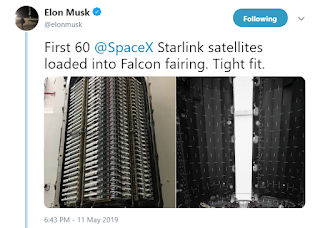5G Americas, the industry trade association and voice of 5G and LTE for the Americas, announced the election of Ciena to its Board of Governors.
5G Americas' Board of Governors members include: AT&T, Cable & Wireless, Cisco, CommScope, Ericsson, Intel, Kathrein, Mavenir, Nokia, Qualcomm, Samsung, Shaw Communications, Sprint, T-Mobile US, Telefónica, WOM and now Ciena.
“Becoming a member of 5G Americas signifies an important step toward enhancing the 5G ecosystem in the region. Working with the other members of this prestigious board will enable us to drive forward the next generations of 4G LTE technology, which will also help to accelerate new 5G deployments,” said Stephen Alexander, Senior Vice President and Chief Technology Officer, Ciena.
Approximately 4 billion connections worldwide are now LTE, representing 47% of all cellular connections, according to the trade group 5G Americas and Ovum.
North America’s market share for LTE at 82 percent exceeds all other world regions at the fourth quarter of 2018; the next highest world regions are Oceania; Eastern and South Eastern Asia with LTE share of 67 percent followed by Western Europe at 52 percent. Latin America and the Caribbean had significant growth of LTE market share to 40 percent, up from 29 percent at the end of 2017. Market share represents the percentage of mobile wireless connections that are LTE technology versus all other mobile cellular technologies.
“While the 5G market reality and innovation are upon us, the number of LTE connections continue to grow on 637 commercial networks worldwide, as well as the evolution to advanced LTE networks for the Internet of Things, Gigabit LTE speeds and new methods for spectrum use and sharing,” stated Chris Pearson, President of 5G Americas.
Additional highlights
4Q 2018 - North America
- LTE achieved 417 million connections with a market share of 82 percent in the U.S. and Canada.
- LTE penetration passed 100 percent in 2018. This penetration rate is forecast to rise to 125 percent in 2021 after which time new 5G connections will begin to impact LTE subscriptions and penetration rates. Penetration rates represent the number of connections compared to the population.
- 417 million LTE connections at 4Q 2018; increase of 63 million year-over-year
- LTE is forecast to reach 86 percent market share with 473 million connections at the end of 2020 (including M2M) then begin to decline as 5G connections begin to grow; in 2021, LTE market share is forecast to decline to 83 percent and 467 million LTE subscriptions
- Early launches of 5G in the U.S. will result in the #1 position globally in 2019 with 336,000 connections, 47 percent of all global 5G connections; however, 5G connections will quickly grow in North America to almost 4 million in 2020 (forecast)
- 5G connections are forecast to pass 100 million in 2022
4Q 2018 - Latin America and the Caribbean
- LTE’s market share increased from 17 to 29 percent year-over-year at year-end 2017, and grew to 40 percent by the end of 2018. LTE is forecast to be the most widely used cellular technology in the region by the end of 2019.
- 700 million total mobile wireless subscriptions
- 277 million LTE connections; 74 million added year-over-year from 4Q 2017
- 4Q 2018 was the largest growth quarter for LTE in 2018 with 19.8 million new connections while all other mobile technologies declined; GSM lost 53 million connections and was down to 123 million at the end of 2018
- LTE is forecast to reach 348 million connections at the end of 2019, 413 million at end of 2020, and peak at 510 million connections by 2022 with 67 percent market share (forecast includes M2M)
- By 2021, 5G is forecast to achieve nearly 3.5 million connections growing to 17 million in 2022 and 75 million connections in 2023
4Q 2018 - Global
- At the end of 2018, global LTE connections reached nearly 4 billion. Also notable, LTE market share reached 47 percent, up from 37 percent at the end of 2017.
 SpaceX successfully launched the first 60 satellites of its Starlink LEO constellation.
SpaceX successfully launched the first 60 satellites of its Starlink LEO constellation. The launch used a SpaceX Falcon 9 rocket with a first stage that had previously been used on the Telstar 18 VANTAGE mission in September 2018 and the Iridium-8 mission in January 2019. Following the launch, the booster successfully landed on the “Of Course I Still Love You” droneship, which was stationed in the Atlantic Ocean.
The launch used a SpaceX Falcon 9 rocket with a first stage that had previously been used on the Telstar 18 VANTAGE mission in September 2018 and the Iridium-8 mission in January 2019. Following the launch, the booster successfully landed on the “Of Course I Still Love You” droneship, which was stationed in the Atlantic Ocean. https://www.spacex.com/sites/spacex/files/starlink_mission_press_kit.pdf
https://www.spacex.com/sites/spacex/files/starlink_mission_press_kit.pdf




















